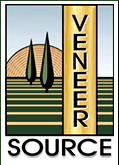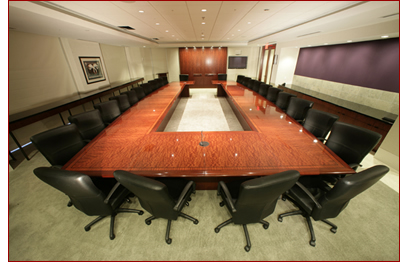







 Selecting a veneer can be based on a myriad of design and functional issues. It is up to the design professional to weigh the species available against the intended use. Wood veneer is a natural material and a renewable resource. Its beauty comes from nature, but can be enhanced by man.
Selecting a veneer can be based on a myriad of design and functional issues. It is up to the design professional to weigh the species available against the intended use. Wood veneer is a natural material and a renewable resource. Its beauty comes from nature, but can be enhanced by man.
In specifying wood veneer, design considerations have to be taken into account. Aesthetics, costs, hardness, stability, and moisture resistence all can play a role. Each species has unique characteristics, but the manner in which the wood is sawn or sliced will produce completely different grain characteristics. Added to that is the way the veneer leaves are joined or laid together, how they are stained or dyed, and how they are finished. These variations provide literally thousands of design possibilities. We suggest that you work early in your project with veneer suppliers and architectural woodworkers, and inform them of your design intent, your budget, color and grain requirements, as well as the sizes of the panels and the total size of the project. your use of their resources can only help to enhance your knowledge and help your clients.
Specifying veneer and veneered panel products for use in furniture, architectural woodwork and cabinetry is a challenge. It requires the design professional to become knowledgeable about wood species, their veneer availability, and how to use veneers correctly. The design professional must then be able to communicate ideas or intent correctly in order to end up with what was conceived in the beginning.
Aesthetics deals with subjective issues such as color, grain character and scale. The objective issues of cost, availability and durability can be judged quantitatively. For instance, when permitted by the specifications, most small or medium sized architectural woodwork projects may be fabricated from premanufactured sets of panels and not custom manufactured panels, because of cost and scheduling factors. Premanufactured or stock panels use varied sequences of veneers, creating panels of varied leaf widths and match and are stocked by a dealer for sale to woodworkers. on the other hand, when a design professional requires that the veneer be selected specifically for a project and specifies and draws how those veneers are to be joined and where they are to be used, the cost and schedule will increase - but so will the control of the final product.
With certain areas of a project aesthetics demands may be more important than cost, and these areas should receive custom laid up panels. For other areas of the project stock sequenced match and numbered panels may be a viable way of saving money and speeding delivery. By defining clearly those physical areas of the project where the design elements are most important and focusing on them for the custom manufactured panel products, and then defining other areas where stock panels may be used, time and money may be saved.
For example, custom laying up of veneer panel products is very important when the doors in a specific area should match paneling adjacent to them. This requires the selection of veneer from a single source and the pressing of the door faces and the panel products by a single manufacturer. This differs from utilizing doors manufactured by a seperate door manufacturer, where the veneer is not the same as the adjacent paneling which was manufactured by the paneling manufacturer. In some cases this may not matter, for instance where the panels and doors are to be stained a very dark color and grain may take on less importance. In highly figured or distinctively figured woods or woods where the natural color is exposed, however, matching the grain, texture and color is very important. Certain woods may be very intolerant of selecting from stock panels in that the are inherently varied in apprearance. For instance rift white oaks has straight grain and fairly constant color, which makes stock sequenced matched and numbered panels relatively easy to match. However, utilizing a highly figured wood such as makore or kewazinga requires absolute matching since there is such strong character in the wood.
... that managed forests, thanks to their high proportion of young, strong, growing trees, enable CO2 to be extracted?
... that an old, unmanaged forest produces as much CO2 through processes of decomposition and decay as it stores, and that therefore an unmanaged forest contributes nothing to reducing global CO2?

Phone: 407-423-2252 • Fax: 407-423-1566 • sales@veneersource.com